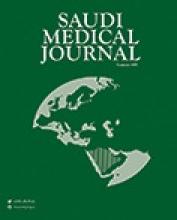Abstract
OBJECTIVE: Kidney repair reconstruction techniques are controversial. The conventional technique is suturing, but this is usually with further loss of viable tissue as it promotes scaring. In this animal model, we investigated the parenchymal effect of different sutures and methods.
METHODS: We carried out this study in the year 2000 in the Animal Laboratory of Dicle University, Diyarbakir, Turkey. We used 40 New Zealand white rabbits in this study, randomized into 5 groups. We separated the left kidney from Gerota's fascia, and performed standard lacerations with incisions 5 mm deep and 10 mm in length. We performed no reconstruction procedure in group 1, and used homeostatic collagen powder in group 2. We primarily sutured the lacerations with chromic gut (4/0) in group 3, and sutured the kidney in group 4 with polyglactin (4/0). We wrapped the kidney with a polyglactin mesh in group 5. We sacrificed 2 rabbits in each group postoperatively on day 2, 15, 45 and 90, and performed left nephrectomy for histological investigation, and assessed interstitial inflammation.
RESULTS: While group 5 established the best results, the other 4 groups had similar intermediate results. The pseudocapsule was visible macroscopically in the polyglactin mesh group. We could see mononuclear cell infiltration, dilatation of tubules, atrophy of tubules, and interstitial fibrosis in all groups except group 5.
CONCLUSION: In this animal model, we found that the most appropriate repair material for kidney surgery was polyglactin mesh.
- Copyright: © Saudi Medical Journal
This is an open-access article distributed under the terms of the Creative Commons Attribution-Noncommercial-Share Alike 3.0 Unported, which permits unrestricted use, distribution, and reproduction in any medium, provided the original work is properly cited.






